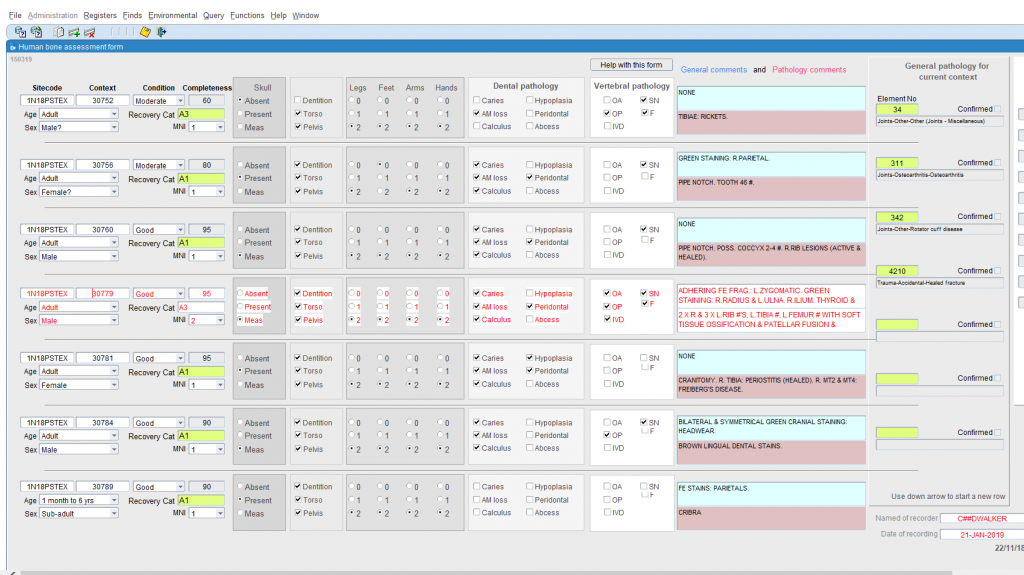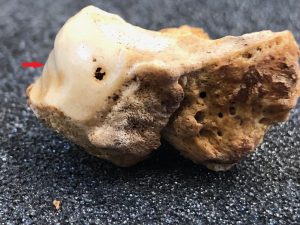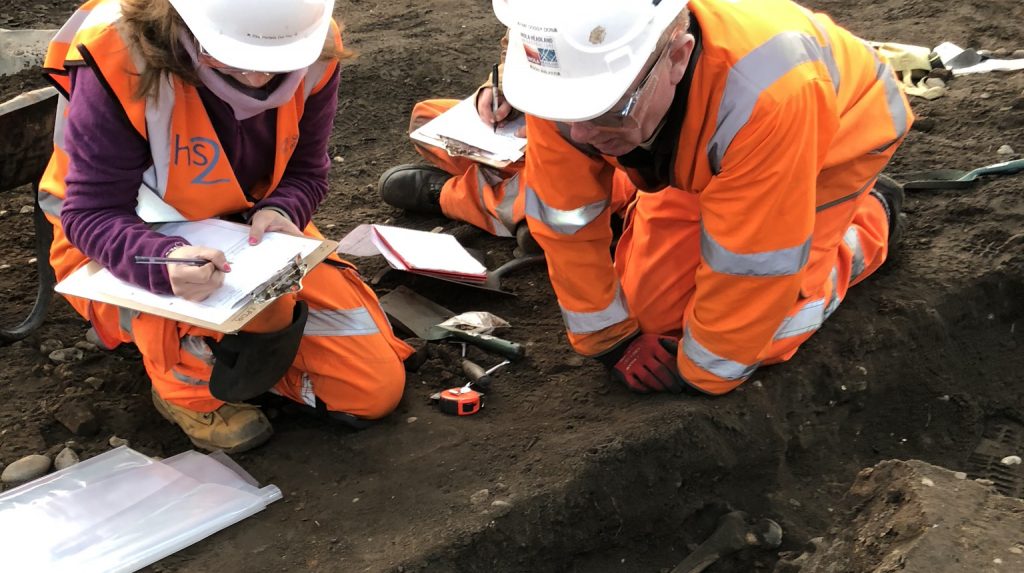Don Walker is one of the Senior Osteologists undertaking archaeological excavation and research at Park Street burial ground on behalf of LM for HS2. In this blog he explores what happens on site and what we can learn from excavating and assessing human remains.
Archaeologists undertaking burial ground excavations take a holistic approach to the study of past communities. This entails engaging with a wide range of evidence which allows us to look deeper into the lives and experiences of people. One major facet of such work involves the study of the skeletons themselves. This is carried out by osteologists – specialists in the study of human bone.
Major burial ground excavations, such as those currently being carried out at Park Street, Birmingham by MOLA Headland Infrastructure on behalf of LM for HS2 require a great deal of planning, and osteologists become involved at an early stage. Past experience of similar projects helps to give clues as to the resources that will be required to manage the archaeological excavation of a densely populated burial ground. Once the project begins, osteologists are fully involved in the fieldwork. Their knowledge of anatomy can assist archaeologists in interpreting the layout of a burial or in identifying skeletons that have become displaced whilst in the ground. The study of burials in situ (in the place they were buried) can also provide important evidence of the effects of disease upon the body of a person when they were alive. It can highlight individuals of particular interest, such as those with major pathological bone changes or others that may have undergone autopsy or dissection.
Once the skeletons have been cleaned, a quick assessment of their potential and significance is carried out. At Park Street we have three osteologists dedicated full-time to this task. With the aid of a cloud Oracle database, we record the completeness, preservation, age-at-death, biological sex and basic details of pathological conditions of each individual skeleton (Fig 1). This Information is then used to form part of the post-assessment report which sets out the potential for further study together with a number of research aims. A selection of skeletons may then undergo far more detailed analysis to learn more about specific aspects of the population: demography, child health, growth and stature, dental disease, diet, trauma, specific pathological conditions, surgery and post-mortem intervention.

Fig 1 Oracle assessment database
For osteologists, the study of an urban burial ground spanning the greater part of the 19th century provides a fascinating opportunity to investigate how life changed in a period that saw mass migration to urban centres during the Industrial Revolution. We are already seeing fascinating evidence of unusual wear patterns in the joints of the wrists and hands that may be connected to intensive piecemeal labour required to produce the huge output of manufactured goods from Birmingham’s workshops (Fig 2).

Fig 2 Capitate bone from left wrist of adult male with severe localised osteoarthritis
The osteologists’ work is not carried out in isolation, but rather as part of the overall fieldwork and research project. We use all possible sources of evidence so that we can provide as full a picture as possible of the lives of those who lived and died in 19th-century Birmingham.
The archaeological programme at Park Street in Birmingham is being carried out by our experts on behalf of LM for HS2 Ltd. To find out more about the programme visit https://www.hs2.org.uk/ or for information on what is going in your local area or how you can get involved head to https://hs2inbirmingham.commonplace.is/.
Explore the archaeology programme on social media with #HS2digs.

0 Comments
Leave A Comment